Conflict Zones
Russia-Ukraine war: List of key events, day 1,154 | Russia-Ukraine war News
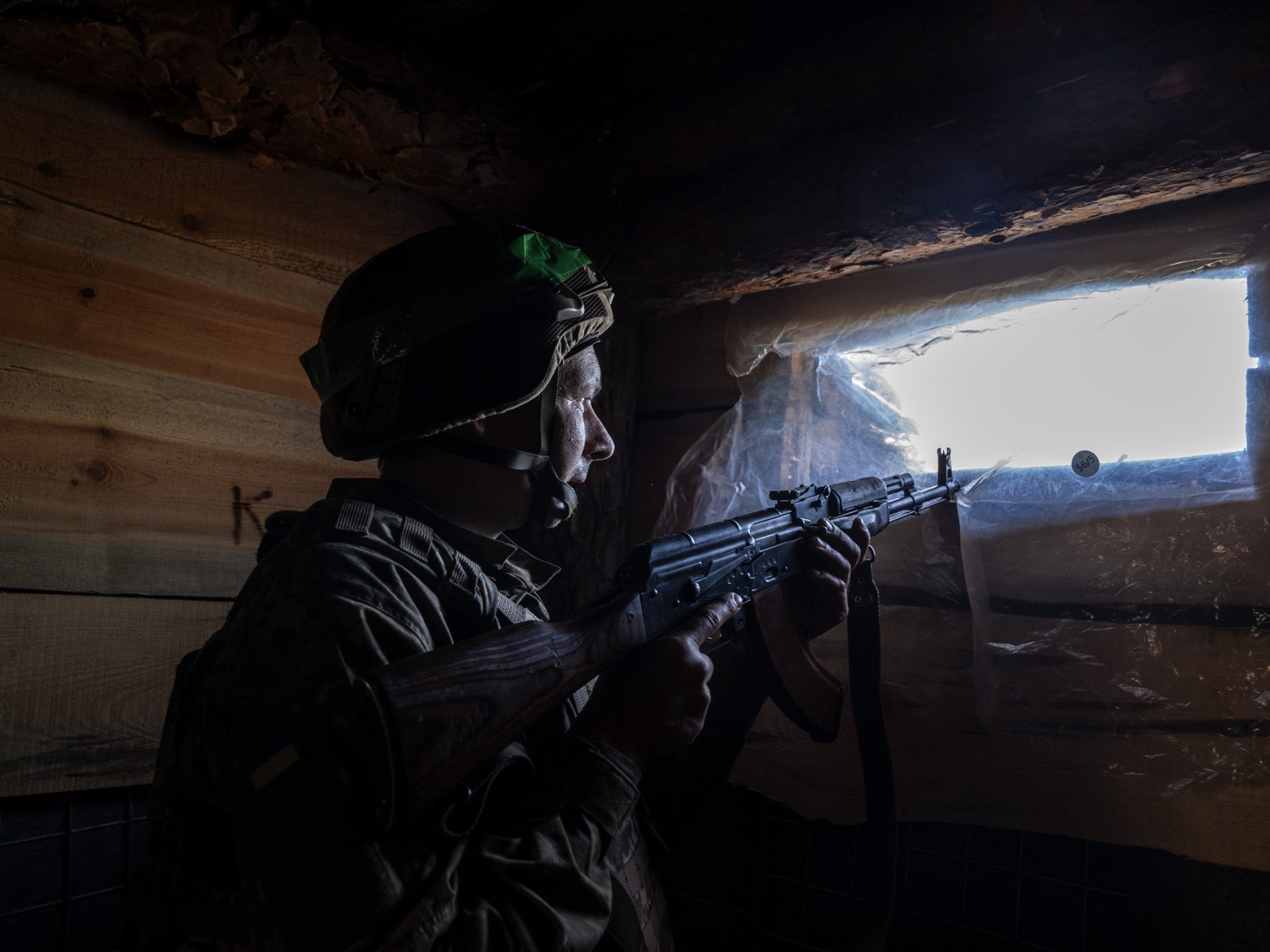
These are the key events on day 1,154 of Russia’s war on Ukraine.
Here is where things stand on Wednesday, April 23:
Fighting
A state of emergency was declared in Russia’s Vladimir region, east of Moscow, following a large explosion at an ammunition storage site, the TASS state news agency said, citing emergency services.
Vladimir’s regional governor, Alexander Avdeev, said the explosion occurred when ammunition caught fire in a storage area at a military base in Kirzhach district, and emergency personnel were working at the scene.
Russia struck the southern city of Zaporizhzhia with two aerial glide bombs. The attack killed a 69-year-old woman and wounded 24 people, including four children, according to regional governor, Ivan Fedorov.
Ukraine’s air force said it took down 38 out of 77 attack drones Russia launched starting early on Tuesday morning, with 31 of the drones not reaching their targets, likely due to electronic warfare.
Overnight Russian drone attacks on east, south and central Ukraine damaged civilian infrastructure and businesses in the Poltava region and injured civilians in the Odesa region, Ukrainian officials said early on Wednesday.
Odesa came under a “massive attack” by Russian drones overnight on Tuesday, wounding at least three people, the head of the regional administration, Oleh Kiper, wrote on his Telegram page. A residential building in a densely populated urban area of Odesa, civilian infrastructure and an educational facility were hit, he said.
Air defence units repelled Russian air attacks on the Kyiv region and Ukraine’s second largest city of Kharkiv, regional governors said in posts on Telegram channels.
Russian forces said they have retaken St Nicholas Belogorsky monastery in the village of Gornal in Russia’s Kursk region, where Ukrainian troops had been based, Russia’s TASS news agency quoted a security source as saying. A Russian military Telegram channel said Ukraine had deployed troops, artillery and drone launchers at the monastery, which Russia’s troops had retaken after 10 days of fierce fighting.
Ukrainian President Volodymyr Zelenskyy claimed that Chinese citizens were working at a drone production site in Russia and suggested that Moscow may have “stolen” drone technology from China. The Ukrainian leader has already alleged that China is supplying weapons and gunpowder to Russia and has called on Beijing to stop Chinese nationals from fighting with Russian forces in Ukraine.
Ukraine’s Foreign Ministry said it summoned China’s ambassador and told him of “serious concern” over Chinese involvement on Russia’s side in the war.
Ceasefire
President Zelenskyy reiterated his readiness for even a partial ceasefire with Russia: “Ukraine is ready for an unconditional ceasefire, and if this ceasefire is partial, then we are ready for reciprocal measures,” he told a news conference in Kyiv.
Zelenskyy also said that Ukraine would not recognise any temporarily occupied territories as Russian: “There is nothing to discuss. This is outside our constitution”.
Russian President Vladimir Putin has reportedly offered to halt Russia’s invasion of Ukraine on the current front line, the Financial Times (FT) said.
According to the FT, Putin made the proposal during a meeting with United States envoy Steve Witkoff in St Petersburg earlier this month. Putin indicated he would be willing to withdraw Moscow’s claims to parts of Donetsk, Luhansk, Kherson and Zaporizhia, and in return, the US would recognise the Crimean peninsula as Russian and also block Ukraine from joining NATO.
US envoy Witkoff will travel to Moscow again this week amid reports in the media that President Trump has proposed accepting that Moscow-annexed territory in Ukraine’s Crimea be recognised as Russia.
US Secretary of State Marco Rubio will not attend talks in London later today aimed at ending the war in Ukraine, State Department spokesperson Tammy Bruce said, after earlier saying he planned to travel to London.
Europe has been increasingly concerned over US President Donald Trump administration’s overtures towards Moscow, after the failure so far of Trump’s efforts to secure a ceasefire in the war.
British Foreign Secretary David Lammy is set to lead the peace talks in London, which will be attended by officials from Ukraine, the US, the United Kingdom and Europe.
News site Axios report that the US expects response on Wednesday to a peace framework that includes unofficial recognition of Russian control of nearly all areas occupied since the 2022 start of the war in Ukraine. According to Axios, under the proposal, which was presented last week, the US would lift sanctions imposed on Russia since 2014 and would return a small part of Russian-occupied Kharkiv to Ukraine.
Zaporizhzhia nuclear power plant would be considered as Ukrainian territory but operated by the US, with electricity supplied to both Ukraine and Russia, Axios reports.
Aid
President Zelenskyy said Ukraine was not discussing any new aid packages with the US.
Sanctions
The European Commission is assessing whether it could legislate to forbid firms in the European Union from signing new contracts for Russian fossil fuels, according to reports, and is working on legal options to allow European Union companies to break existing gas supply contracts with Russia without facing penalties.
Regional security
Denmark will spend about four billion crowns ($614m) on building and procuring 26 navy vessels for patrolling, oil spill response and surveillance of undersea cables, Danish Defence Minister Troels Lund Poulsen said. The investment comes as countries bordering the Baltic Sea are on high alert after a number of underwater cables were severed and the sabotage of the Nord Stream gas pipelines.
Diplomacy
EU foreign policy chief, Kaja Kallas, told the AFP news agency that the US has not used up its “tools” to pressure Russia into peace in Ukraine, as she accused Moscow of playing for time with its Easter truce in Ukraine.
President Zelenskyy will attend the funeral service for the late Pope Francis, presidential adviser Dmytro Lytvyn told the Ukrainian news agency, RBK-Ukraine. Zelenskyy will travel to Rome together with his wife Olena, Lytvyn said.
President Putin, who is subject to an International Criminal Court arrest warrant over his invasion of Ukraine, will not attend the funeral, the Kremlin said.
Conflict Zones
White and Black farmers still bear the scars of Zimbabwe’s land grabs | Poverty and Development News

Harare, Zimbabwe – Guy Watson-Smith felt hurt and betrayed when his 5,000-hectare (12,355-acre) farm in Beatrice, in Zimbabwe’s Mashonaland East province, was violently invaded by three armed men in the early 2000s.
The then-51-year-old white commercial farmer was not just losing his land; he was leaving behind hundreds of workers and their families, many of whom he had known since childhood.
“We cried,” the 75-year-old told Al Jazeera.
On the morning of September 18, 2001, Watson-Smith, his two farm managers, and his unwelcome visitors sat at a table on the patio.
Watson-Smith’s wife, Vicky, offered them a cup of tea.
But the message was simple: leave or die.
His family was given two hours to pack.
They fled to the capital, Harare, 54km (33.5 miles) away, seeking refuge at his father-in-law’s home in the Avenues, an inner-city suburb.
Watson-Smith’s ordeal was not an isolated incident.
Across the country, war veterans armed with pistols led similar land grabs, together with their children and with assistance from the police’s elite units.
The invasions were part of the chaotic Fast Track Land Reform Program (FTLRP), launched under President Robert Mugabe in 2000 to reclaim land from about 4,000 white farmers and redistribute it to landless Black Zimbabweans.
But instead of redressing past injustices, Zimbabweans say it fuelled economic and land insecurity as mainly governing party loyalists benefitted from the reclamations.
More than two decades on, a struggling agricultural sector haunts Zimbabwe, leaving the question of land ownership unresolved, even as the government has begun to pay compensation to white farmers.

Colonial land invasions
When land was seized from white farmers in the early 2000s, it was forcibly and sometimes violently taken, with at least seven people killed in the process.
However, Zimbabwe’s land struggles did not begin with Mugabe’s FTLRP or even the country’s independence in 1980. The tensions stretch back over a century to the arrival of white British settlers in 1890.
When the British arrived, they invaded Mashonaland areas and took mining rights from the locals under agreements that the local leadership did not understand.
They then expanded control, violently displacing Black people from their fertile ancestral lands.
Forced into barren areas with poor soil, low rainfall and tsetse flies, Black Zimbabweans struggled to farm or raise cattle.
By the 1950s, land was formally divided along racial lines, with white settlers holding the most fertile areas.
This deep injustice fuelled the liberation struggle.
Revolutionary groups like ZANU and ZAPU took up arms, and from 1964 to 1979, land was at the heart of the Rhodesian Bush War – also known as the Second Chimurenga, during which Black Zimbabweans fought for independence from the white minority government.
The 1969 Land Tenure Act, which escalated Black land evictions, was a breaking point.
For many fighters, reclaiming the land became not just about survival, but about identity and economic freedom.
The war ended with the Lancaster House Agreement drawn up and signed in London in December 1979, setting the stage for Zimbabwe’s first democratic elections.
On April 18, 1980, after Mugabe’s victory, Zimbabwe gained independence from Britain. The Lancaster agreement barred Mugabe’s government from forcibly seizing land, allowing only voluntary transfers under a “willing buyer, willing seller” system from 1980 to 1990.
Many war veterans felt betrayed.
They had fought for liberation, expecting immediate land redistribution, but years of slow negotiations left them frustrated. From 1990 to 2000, land reclamations took place by the government compulsorily buying land from white commercial farmers using funds from donors, including Britain.
However, the process became politicised as some senior politicians and elites redistributed land among themselves instead of to the poor. Some of the funds were allegedly loaned to ruling ZANU-PF party loyalists and not used for the intended purposes of land redistribution. This raised accusations of corruption, causing some donors to cut funding.
Britain, which had initially committed 20 million pounds ($26.6m at the current rate) to fund the land reform programme, withdrew support in 1997.
The United Kingdom said it could no longer accept responsibility for colonial injustices and would not fund a programme plagued by corruption and elite capture.
Donor funding helped the Zimbabwean government buy land from white commercial farmers, enabling about 50,000 Black farmers to receive land. But the programme was ultimately underfunded and fell far short of the targeted 8 million hectares (19.8 million acres).

Mugabe-era land grabs
In February 2000, under mounting pressure from furious war veterans, Mugabe attempted to amend the constitution to allow land seizures without compensation.
When the referendum failed, the war veterans and their families took matters into their own hands by invading farms. Soon, Mugabe officially followed suit by launching the FTLRP.
At that time, the minority white population, which made up about 4 percent of the country, owned more than half the land in Zimbabwe.
For months, Watson-Smith’s land, where he grew tobacco, maize, paprika, groundnuts and Rhodes seed for export, remained untouched until the day a powerful war hero with the ZANU-PF set his sights on it.
Watson-Smith was in Harare, where he worked as the Mashonaland East provincial chairman of the Commercial Farmers Union, a body representing white commercial farmers, when he learned that his farm had been invaded by retired General Solomon Mujuru, a former commander of the Zimbabwe Defence Forces and top ZANU-PF figure in the province.
Efforts to move their assets like tractors and vehicles went in vain, Watson-Smith said, as the invaders allowed only his wife to take their personal belongings, like photographs and furniture, from the house before leaving.
Even the courts offered little protection.
Though Watson-Smith won a High Court ruling to reclaim his assets, Mujuru’s thugs chased away the sheriff sent to enforce the order.
Watson-Smith and his family were lucky to escape their farm unharmed. But they were still afraid. On December 21, 2001, they fled through the Beitbridge border post to South Africa, later moving to France to start a new life.

Even Black farmers not safe
Before the farm invasions, Zimbabwe produced enough to feed itself and for exports to Southern Africa and Europe. Agriculture was the backbone of the economy, employing much of the country’s workforce. Some Black Zimbabweans had also risen to the top, managing farms.
Initially, Mugabe’s land expropriation programme was meant to redistribute land to disadvantaged Black Zimbabweans to boost equity and agricultural development.
But under the cover of correcting colonial injustices, powerful officials seized productive farms from both white and Black farmers.
Kondozi Estates in eastern Zimbabwe was one of the farms seized by senior ZANU-PF figures in 2004.
The land in Manicaland province was co-owned by Black Zimbabwean Edwin Moyo and the white de Klerk family.
At the time, it was a vital exporter of fresh produce, particularly high-quality beans, gooseberries, corn, mangetout and sugar snaps to European retailers like Tesco and Sainsbury’s.
It employed hundreds in Mutare, and its destruction was a death blow to the local economy.
The same pattern repeated itself on other farms, locals say, with Black owners without strong ties to the ZANU-PF continuing to face evictions.
In 2021, human rights defender and lawyer Siphosami Malunga lost his farm to ZANU-PF secretary-general Obert Mpofu.
Though Zimbabwe’s lower courts later ruled in his favour and he is back on his farm awaiting a High Court decision, the battle over its ownership rages on.
“Land reform was necessary,” 53-year-old Malunga told Al Jazeera.
“The colonial project dispossessed Blacks, pushing them on to barren land while whites took the best farms. But the way reform was handled enriched the elite while leaving ordinary Zimbabweans with nothing.”
Mugabe once campaigned for a “one man, one farm” policy. Yet his allies ignored it. Even his wife, Grace Mugabe, amassed at least 15 farms.
Most of the beneficiaries of the FTLRP were ZANU-PF loyalists, experts note.
Rejoice Ngwenya, a political analyst based in Harare, said Mugabe’s land reform was not about Black empowerment.
“It had motives: firstly, to pacify war veterans that were agitating for more recognition; secondly, to punish white commercial farmers who were supporting the opposition. The man was insecure,” he told Al Jazeera.
“If you promise to not expropriate Black-owned farms, you should not touch Moyo or Malunga’s farms. But ZANU-PF does not care,” he remarked.
Vivid Gwede, another Harare-based political analyst, said land ownership has been used as a tool to punish disloyalty or reward loyalty to the governing party.
“On account of politics, some Black farmers have had their land invaded,” he said.

Compensation and rejection
Unlike white commercial farmers who spent decades learning the land, most of the ZANU-PF-aligned farmers who took over had no farming experience.
The new owners were people who had spent most of their lives in the bush fighting against white colonialists, experts note, while many Black farm workers who had experience managing white-owned farms did not benefit from land reclamations.
As a result of the chaotic and violent invasions, knowledge of agricultural practices was also not passed on.
Soon, the Southern African nation with a once-thriving agricultural economy began to face a food crisis, later compounded by climate change.
For years, many Zimbabweans have depended on food aid from donors like the United Nations World Food Programme. In April 2024, the government declared a national disaster as a severe El Nino-induced drought left more than half of Zimbabwe’s 15.1 million people facing hunger.
The crisis exposed the country’s collapsed agricultural sector. Before land seizures, white commercial farmers and Black farmers like Moyo had irrigation schemes to mitigate droughts. ZANU-PF dismantled these systems, leaving the country vulnerable.
Zimbabwe’s collapse in agricultural productivity stems not just from poor planning, but from a deeper culture of impunity, experts say.
Across the country, though court orders were issued to stop farm invasions and evictions of white commercial farmers, these were ignored. Since 2000, former farmers have filed hundreds of legal cases, trying to reclaim their assets, with little success.
The 2013 constitution promised compensation, but only for farm improvements, not the land itself.
When Emmerson Mnangagwa took power in a 2017 military coup, he inherited a shattered economy, abandoned and poorly managed farms, food shortages, and soaring unemployment.
Desperate for solutions, he reached a $3.5bn compensation deal with white farmers in 2020, hoping to mend relations with the West and lift US economic sanctions imposed in 2001. But the plan stalled.
In October 2024, the government set aside $20m to compensate a handful of foreign white farmers from Denmark, Switzerland, the Netherlands and Germany whose investments were affected by the land reform programme.
This month, Finance Minister Mthuli Ncube announced that the government had paid $3.1m to white former farmers who lost land during Zimbabwe’s land reform.
However, the Compensation Steering Committee (CSC), a domestic body representing white farmers, criticised the compensation as a token gesture and rejected the deal, saying it wants negotiations instead.
“We’re willing to talk, but they [the government] are not talking to us,” Ian McKersie, chairman of the CSC told Al Jazeera.
In response, Nick Mangwana, permanent secretary in Zimbabwe’s Ministry of Information, told Al Jazeera there are “factions” among the white farmers. “If they speak, they are speaking for themselves, they do not represent the mainstream,” he said. “It is preposterous [to reject the deal]. It does not make sense.”
Mangwana also denied that there are ongoing land seizures, such as the case of Malunga, whose farm was taken in 2021. “These are just disputes … It is not a land invasion. There is no land invasion in Zimbabwe,” he said.

Untended farms and uncertain futures
Now in France, Watson-Smith runs a real estate business.
But back in Zimbabwe, his once-productive Alamein Farm has fallen into disuse; its land is now less vibrant than it used to be.
After General Mujuru, who was one of Zimbabwe’s most feared men, seized Watson-Smith’s farm, he turned it into a hunting ground. Following Mujuru’s death in 2011, his wife, former Vice President Joice Mujuru, kept the land but struggled to maintain it.
Meanwhile, Kondozi Estates, the major part-Black owned farm taken by ZANU-PF elites, also fell into decay. A visit this year revealed abandoned equipment and overgrown fields.
Across the country, seized farms remain untended.
During the land reform, farms were given long-term leases. But banks refused to recognise these leases as collateral, making it impossible for farmers to secure loans.
In late 2024, President Mnangagwa ordered the Ministry of Lands to stop issuing permits and leases in favour of title deeds. But experts warn this is problematic as it does not address the land dispute between resettled farmers and dispossessed white commercial farmers.
“If the government issues title deeds on land already under existing historic title deeds, it’s unlawful,” Willie Spies, a lawyer assisting dispossessed Zimbabweans, told Al Jazeera
“A legitimate process requires compensating former farmers fairly before transferring ownership.”
New farmers have already benefitted from state subsidies, including a 2007 mechanisation programme that distributed tractors and harvesters without repayment.
Zimbabwe’s debt now stands at $21bn, according to the World Bank – $13bn owed to international creditors and $8bn in domestic debt. Some of the domestic debt is a result of the agricultural subsidies, which ended up benefitting political elites and not the poor rural farmers.
Corruption runs deep, said Malunga, who is still awaiting a final court decision about ownership of his farm.
“Agricultural subsidy programmes were hijacked by the elite, enabling grand corruption and theft of billions,” he said.
While title deeds could offer land security to the new farm owners, he warned: “This risks creating a privileged Black landowning class.”
Watson-Smith notes that although title deeds helped farmers like him by “open[ing] the doors to credit for irrigation, dams and every farm improvement”, giving title deeds to new farm owners without addressing past injustices is meaningless.
“It might impress Zimbabwean banks, but international lenders won’t recognise stolen property,” he said.
Once the backbone of Zimbabwe’s economy, agriculture is now crippled by corruption, mismanagement and political greed, farmers say.
Meanwhile, the scars of the land grabs remain, both for displaced former farmers and a nation still grappling with the fallout.
As many white farmers live in self-exile abroad, many common Black farmers are in limbo, facing off against senior politicians in the battle for land ownership.
For now, Malunga is back on his farm, growing tomatoes and other crops. But he remains unsettled.
“Pending the decision of the High Court, we are in occupation,” he said, knowing his future is uncertain until the judge decides.
Conflict Zones
How Pope Francis redefined the Church’s ties with Africa | Religion News
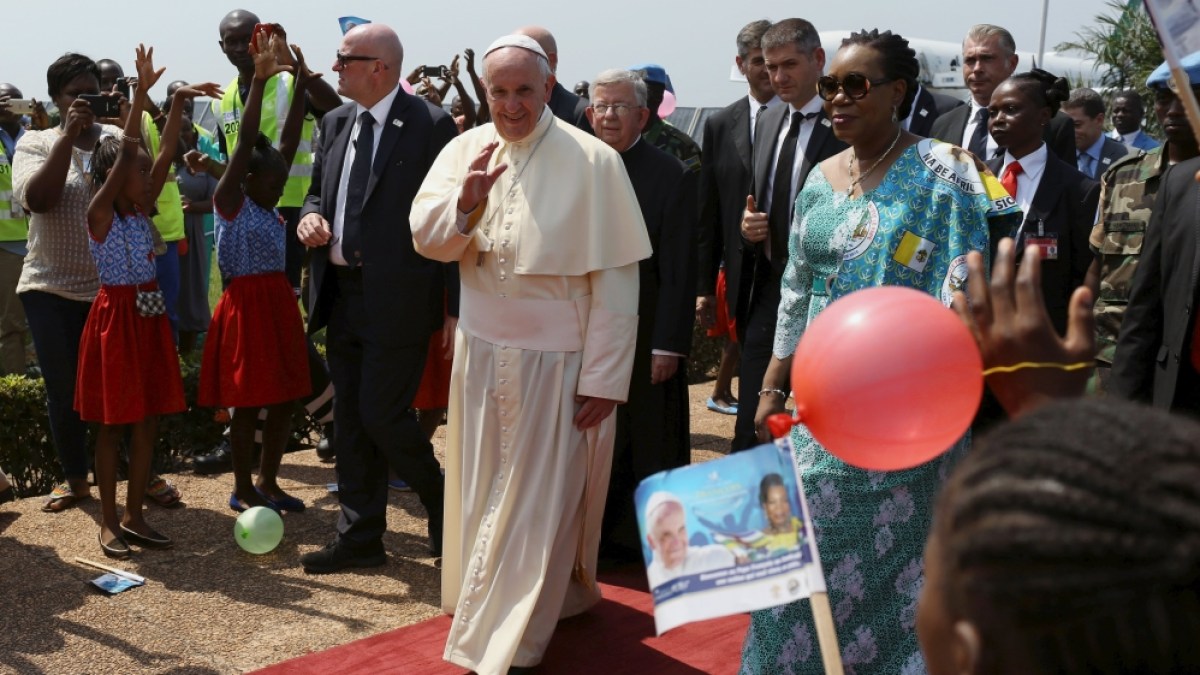
Thousands of miles from the Vatican, the death of Pope Francis is being mourned by millions of Catholics on the African continent.
Francis, who was renowned for his liberal embrace of all groups of people and his vocal support for poor and marginalised communities, was a key figure on a continent sometimes referred to as the “future of the Catholic Church”, owing to the vast population of African Catholics: One in five Catholics is African.
Throughout his papal leadership, Pope Francis solidified recently established Vatican conventions by visiting 10 African countries, reinforcing engagements made by his predecessors. Before the 1960s, popes hardly left the Vatican.
Leaders across Africa, too, are mourning his death. Kenya’s President William Ruto referred to the late pope as someone who “exemplified servant leadership through his humility, his unwavering commitment to inclusivity and justice, and his deep compassion for the poor and the vulnerable”.
Here’s how the late Pope Francis prioritised Africa during his tenure:

Pope Francis’s many trips to Africa
Pope Francis made five trips to Africa throughout his papacy, during which he visited 10 countries.
He opted to visit nations that were in strife and were facing war or low-level conflict. He also focused on those struggling with economic and climatic challenges. The pontiff did not shy away from holding mass in ghettos or kissing the feet of warring leaders in hopes of bringing peace.
Those visits modelled those of Pope John Paul II (1980-2005), who visited more than 25 African countries in his 25 years of service, transforming the way the Vatican engaged with the continent. Pope Benedict XVI (2005-2013) visited three African countries over two visits.
These are the countries Pope Francis visited and when:
2015: East Africa (Uganda, Kenya, Central African Republic – CAR)
The pontiff’s six-day visit to three African countries in November 2015 was replete with colourful welcomes and huge mass events.
In Nairobi, the Kenyan capital, the pope is still remembered and revered for holding mass in Kangemi, a low-income neighbourhood. There, he decried what he called “modern forms of colonialism” and pointed out that the country’s urban poor were excluded and underserved. He also criticised wealthy minorities who, he said, hoard resources meant for all.
In a colourful welcome to Uganda, the pope enjoyed traditional dances from different ethnic groups. He blessed dozens of children thrust into his popemobile, the open-sided car, as he cruised through throngs of people gathered to catch a peep. He also visited a treatment centre for disabled children and spoke to more than 700 disabled people.

Healing a fractured country
Then, in the CAR, the pope did the unprecedented: He ventured into a Muslim neighbourhood amid religious tensions in the country that had lasted for months.
The PK5 neighbourhood in the capital, Bangui, had been off-limits to Christians before then, but as the pope made his way to a mosque there, crowds of Christians followed him in. People who had lost touch cried as they embraced each other.
Pope Francis urged both sides to lay down their arms and called Africa “the continent of hope” in his speeches. The visit would eventually lead to a peace agreement between the warring factions, although true peace would take another five years.
2017-2019 North Africa (Egypt, Morocco)
In April 2017, Pope Francis visited Cairo for two days to support the Coptic minority there, the largest Christian community in the Middle East. Coptic Christians have been subject to marginalisation and deadly attacks for years in Egypt. Francis also reached out to Muslim clerics in the country.
On his March 2019 trip to Morocco at the invitation of King Mohammed VI, the pope also called for religious tolerance and inclusion. He urged Morocco to respect the rights of refugees and immigrants.

2019 Indian Ocean (Mozambique, Madagascar, and Mauritius)
The same year, in September, Pope Francis turned his attention to Southern Africa, particularly countries in the Indian Ocean.
In Mozambique and Madagascar, he called for an end to poverty and better protection of the environment in a region where climate change has brought intensifying storms and destructive cyclones.

2023: Democratic Republic of the Congo (DRC) and South Sudan
Amid ongoing conflict and a humanitarian crisis brought on by armed factions looking to control the country, the pope’s visit to the DRC symbolically called for peace and reconciliation in the troubled central African nation.
The DRC, which has the largest number of Catholics in Africa – an estimated 35 million people – was an important one for the pope, who’d had to postpone the trip because of ill health. Congolese showed up in the thousands to welcome him.
A show of humility for South Sudan
In South Sudan, the pope called for continued peace between rivals President Salva Kiir and his deputy, Vice President Riek Machar. The country, Africa’s youngest, has been rocky since it gained independence from Sudan in 2011. Immediately after, and until 2013, a civil war broke out between factions loyal to the two leaders, leading to the deaths of hundreds of thousands and the displacement of millions of South Sudanese.
Five years before he set foot in South Sudan, the pope had expressed an unusual level of humility: He’d lowered himself with great difficulty to kiss the two leaders’ feet while they were on a spiritual retreat to the Vatican. He called on them to stick to signed peace agreements for the sake of the people.
Since January, the country has once more been on the brink of conflict. In a letter in late March, at a time when the pope was already encountering more serious health problems, he wrote again to the two leaders, calling for peace and dialogue.
Did the pope have a good relationship with African bishops?
Yes, Pope Francis enjoyed cordial relations with different African bishops and their associations. However, he also encountered criticism from some for his stance on same-sex unions.
In December 2023, the pope authorised the blessing of same-sex couples, an unprecedented move in the Church. He ordained that such blessings may be carried out as long as they don’t form part of the Church’s regular rituals, and if they are not carried out at the same time as other civil unions.
African bishop associations pushed back hard at this. Several countries on the continent are strongly against same-sex or other non-conforming gender categories due to religious and cultural beliefs.
One such association was the Symposium of Episcopal Conferences of Africa and Madagascar (SECAM), which, in a statement, rejected the rule and described the union of same-sex or non-heterosexual people as “unacceptable”. The group, under the lead of Cardinal Fridolin Ambongo of the DRC, said “these acts…must not be approved under any circumstances.”
Bishops in Asia also made similar calls for the Vatican to U-turn on the new ruling.
Responding to the criticism, Pope Francis told the Italian newspaper La Stampa that his emphasis was on the blessing of the people involved, not necessarily the union. He said: “We are all sinners: Why then draw up a list of sinners who can enter the Church?”
In the case of criticism from Africa, Pope Francis acknowledged the concerns. “For them, homosexuality is something ‘bad’ from a cultural point of view; they don’t tolerate it,” he said.
Conflict Zones
‘Act of war’: What happened in Kashmir attack that killed 26 tourists? | Conflict News
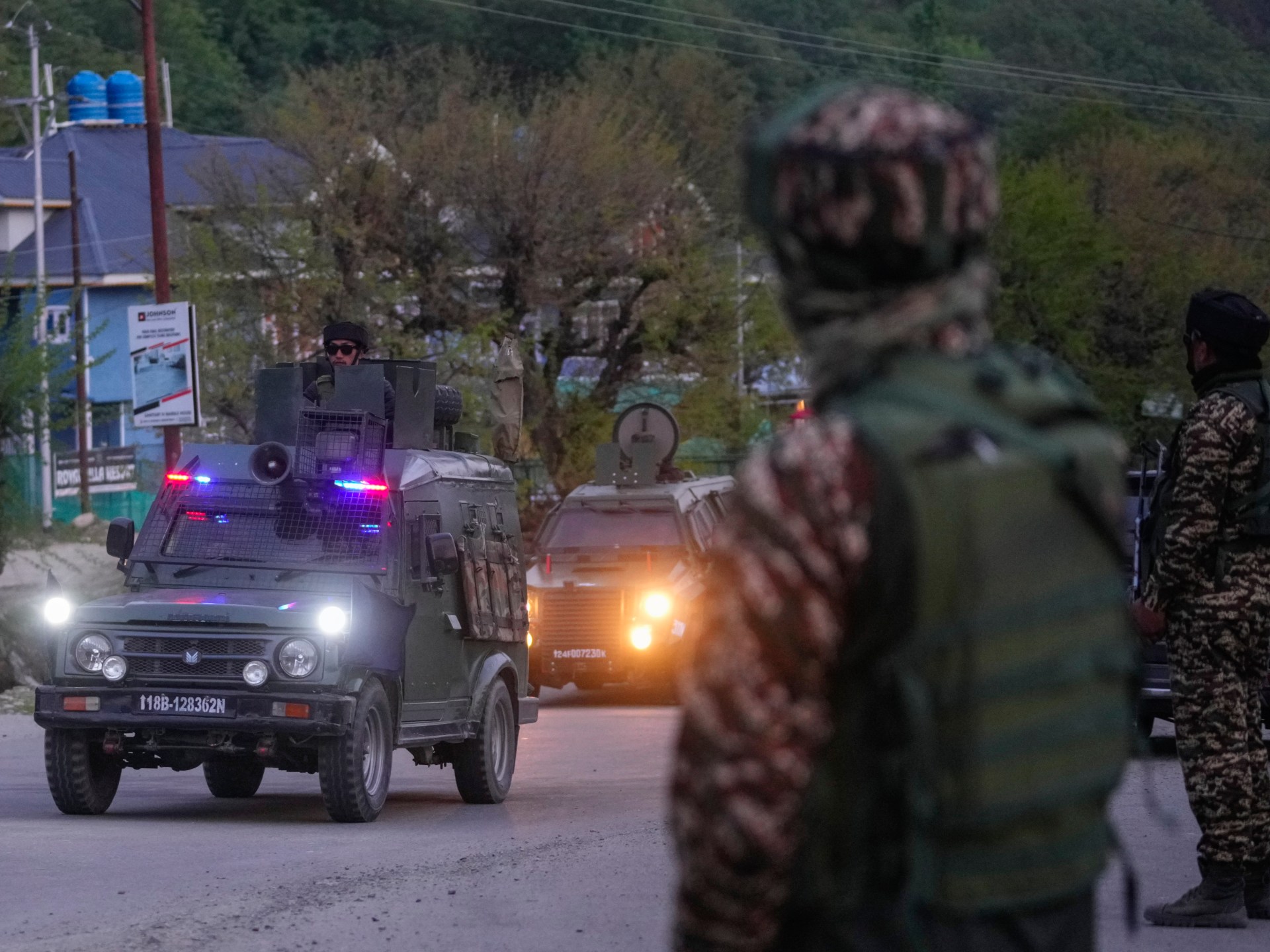
Srinagar, Indian-administered Kashmir — Suspected rebels killed at least 26 tourists on Tuesday in the picturesque tourist resort of Pahalgam in the deadliest such attack in a quarter century in Indian-administered Kashmir, raising fears of an escalation in India-Pakistan tensions.
The attack in Kashmir’s southern district of Anantnag prompted anger across India. It came amid the peak tourist season as hundreds of thousands of tourists are holidaying in the region, which has been racked by a three-decade armed rebellion.
Soon after the attack, teams of police and paramilitary troops rushed to the spot to evacuate the wounded tourists and launch a manhunt for the attackers. Indian Home Minister Amit Shah, along with the country’s top security brass, rushed to Kashmir, while Prime Minister Narendra Modi cut short a visit to Saudi Arabia to return to New Delhi, where he held a meeting on Wednesday morning to craft India’s response.
The attack also unfolded as India is hosting US Vice President JD Vance, who arrived on Monday and is scheduled to leave on Thursday.
Here’s what we know about the attack, the victims, the attackers, the backdrop for the killings, what this means for Kashmir and the region, and how India might react.

What happened?
Pahalgam, which means “valley of shepherds” in Kashmiri, is one of the most visited tourist destinations in the region, located about 50km [31 miles] from the main city of Srinagar.
On Tuesday, witnesses told Al Jazeera that the area was bustling with tourists. At about 2:45pm, a group of armed men in camouflage clothes emerged from a nearby forest, an official said, requesting anonymity to discuss details that security forces have not formally made public.
The attackers “opened indiscriminate fire at Baisaran meadow, a scenic uphill area accessible only by foot or pony rides,” the official said. Many tourists were caught off guard as the sudden volley of bullets rang out.
Simran Chandani, a tourist from Nagpur in the western Indian state of Maharashtra, said that she was not sure she would survive the attack.
“We were preparing to leave after having tea and maggi (a popular pre-packaged, ready-to-eat noodle snack)” when the attack started, she said, describing Pahalgam as “mini-Switzerland”.
Then it all changed. “I saw a rush of people coming down, we thought the balloon had burst, people were pushing each other, who told us an attack had happened,” she recalled, adding that mostly men were fired upon.
She joined the others in trying to escape. “I was taking the name of God and running,” Chandani said.
How many people were killed, and what do we know about them?
At least 26 people have been killed in the attack, and more than a dozen others were injured.
The tourists killed were almost all civilians, and an Indian Navy officer from the northern state of Haryana on his honeymoon.
A 68-year-old former banker from Pandurangapuram in the southern state of Andhra Pradesh, who was visiting the region with his wife, was also killed. The deceased also included a realtor from the southern state of Karnataka, an accountant from the eastern state of Odisha, a cement dealer from Uttar Pradesh in the north, and a Gulf-returnee from the southern state of Kerala.
One foreign national, from Nepal, was among those killed.
Who claimed responsibility for the attack?
A statement issued in the name of the Resistance Front (TRF), which is believed to be an offshoot of Pakistani-based Lashkar-e-Taiba, claimed responsibility for the attack.
The statement linked the attacks to the thousands of residency permits being handed over to Indian citizens, permitting them to live and work in Kashmir. However, Al Jazeera could not independently confirm the statement’s authenticity.
The Indian government had stripped Kashmir’s semi-autonomous status in 2019, asserting more federal control and splitting the former state into two union territories. The move escalated political tensions in the region and paved the way for the Indian government to issue residence permits to non-Kashmiris, which had previously been banned.
Indian officials told Al Jazeera on condition of anonymity that they suspected that four attackers took part in the killings – two of them from Pakistan, and two from Indian-administered Kashmir.
Have tourists been attacked in the past?
Even amid Kashmir’s unrest, direct attacks on tourists have been rare.
In 1995, six foreign tourists were abducted in Pahalgam by the armed group Al-Faran. One was killed, another escaped, and the remaining four were never found.
In 2000, 32 people, including 21 Hindu pilgrims, were killed at Nunwan in Pahalgam.
A year later, 13 people, including 11 pilgrims and two locals, were killed near Sheshnag lake in the same area. In 2017, eight pilgrims were killed in a shooting incident in the Anantnag district. In June last year, eight Hindu pilgrims were killed in the southern part of Jammu’s Kathua when their bus was attacked and fell into a gorge after the driver lost control.
But Tuesday’s attack is likely to be the deadliest attack on tourists at least since the 2000 attack in Nunwan.
Overall, Kashmir has not seen death in an attack on this scale since the bombing outside Jammu and Kashmir’s state legislature in October 2001, in which 35 people were killed.
The nature and scale of the attack stunned survivors and local politicians.
“We went to Pahalgam, and I was sitting on the chair in the meadow when I heard three shots, which created chaos,” said Vinu Bai, a 65-year-old tourist from the western state of Gujarat who was being treated with a bullet injury in the district hospital in Anantnag.“Everyone started running. The bullet in the chaos hit my arm.”
“We thought Kashmir was peaceful, we did not know this would happen.”
Iltija Mufti, a young politician associated with a local opposition group, said Pahalgam was usually patrolled heavily by Indian security forces. “For an attack like this to happen in a place like Baisaran,” she said, “is extremely shocking”.
“There’s no place for such an attack to take place in our society.”

How has the Indian government responded?
India’s leaders were meeting on Wednesday to prepare the country’s response.
Modi, who was earlier supposed to meet Saudi Crown Prince Mohammed bin Salman for a state dinner in Jeddah, cut short his trip and rushed back to India.
“I strongly condemn the terror attack in Pahalgam, Jammu and Kashmir. Condolences to those who have lost their loved ones. I pray that the injured recover at the earliest. All possible assistance is being provided to those affected,” PM Modi said in a tweet. “Those behind this heinous act will be brought to justice … they will not be spared!”
Home Minister Amit Shah also rushed to Srinagar and met top security officials in the region. Rahul Gandhi, the top opposition leader from the Indian National Congress, slammed the government, urging it to move beyond the “hollow claims” of normalcy in Kashmir since the revocation of the special status in 2019.
“The whole country is united against terrorism,” Gandhi said. “Instead of making hollow claims of the situation being normal in Jammu and Kashmir, the government should now take accountability and take concrete steps so that such barbaric incidents do not happen in the future and innocent Indians do not lose their lives like this.”
![Narendra Modi and the Pakistani army chief Asim Munir [AP Photo]](https://www.aljazeera.com/wp-content/uploads/2025/04/AP25044777628131-11-1745390343.jpg?w=770&resize=770%2C513)
Will India retaliate against Pakistan?
Experts said that the government’s response could include some form of retaliation against Pakistan for the brutal attack.
“This is an act of war. That’s how we are seeing it. It has come just days after that speech by Pakistan’s army chief,” Tara Kartha, director at the Centre for Land Warfare Studies (CLAWS), a New Delhi-based think tank. Kartha, who was formerly an official at India’s National Security Council Secretariat, was referring to last week’s address by Pakistani Chief of Army Staff Asim Munir, where he reiterated his support for the two-nation theory that led to India’s partition in 1947, and affirmed “difference from Hindus”.
Kartha said that the actions in Pahalgam match the tone of Munir’s “invective-loaded” address on April 16. “Only if Pakistan condemns the attack in the strongest terms and promises action against terrorists in the next 48 hours will a serious crisis be averted.”
Pakistan responded in the early hours of Wednesday.
“We are concerned at the loss of tourists’ lives in an attack in Anantnag district of Indian Illegally Occupied Jammu and Kashmir. We extend our condolences to the near ones of the deceased and wish the injured a speedy recovery,” the Pakistani Ministry of Foreign Affairs said in a statement. India and Pakistan both claim all of Kashmir, and each controls a part of it.
While that statement is unlikely to calm passions in India, where the government will face pressure to act tough against Pakistan, some experts cautioned against an impulsive reaction.
India’s relative stability compared with its “highly volatile neighbour” should inform its response, said Saba Naqvi, a veteran political commentator based in New Delhi.
“As for India, most people here think the BJP regime will simply drop bombs there and everything will be avenged,” she said, referring to Modi’s Hindu majoritarian Bharatiya Janata Party (BJP). “But it is not as simple as that.”

What does the attack mean for Kashmir?
Kashmiri politicians and civil society have condemned the attack, arguing that such actions hurt residents more than anyone else.
“This is a terrorist act. I don’t think I can define it as anything else. Whoever has done it only wants to harm Kashmiris, our economy, and a sense of political stability that had returned to place in the past couple of months,” Waheed ur Rehman Para, a Kashmiri legislator from the opposition People’s Democratic Party (PDP), told Al Jazeera.
Tourism is an important component of the local economy, contributing nearly 7 percent to its gross domestic product (GDP). A rush of visitors to Kashmir also serves the political messaging of Modi’s BJP that it has succeeded in bringing peace and calm to the region.
Yet, even before the Pahalgam attack, things were far from normal in the region. Since 2019, the Indian government has cracked down on political activists and civilians alike, arresting thousands of people under draconian laws that allow it to keep them under detention for lengthy periods without a trial.
Last year in October, Kashmir voted to choose its first elected head after nearly a decade.
Omar Abdullah, a popular provincial politician who campaigned on the promise of reinstating the lost autonomy, clinched a landslide victory in these polls. But his rule has been severely restricted by the new laws of the union territory, with many powers now held by a federally handpicked lieutenant governor.
Still, the Pahalgam attack has brought many hoteliers and tour operators to the defence of tourists and against those behind the killings.
“This is not acceptable at any cost. What is most difficult, more than anything else, for us at this hour is the heavy human loss this has imposed. Tourism is not the priority at the moment,” said Abdul Wahid Malik, a hotelier based in Pahalgam, and former president of the local hoteliers’ guild.
A landslide in Ramban village, a gateway connecting the mountainous Kashmir region with the plains of Jammu, has disrupted traffic in and out of the landlocked valley, pushing airfares higher and making it difficult for fear-stricken tourists to leave the region, following Tuesday’s attack.
After learning that a tourist family was stuck, Malik arranged four rooms for them at his hotel. “We are duty-bound to ensure their safety,” he said. “The attack has devastated us.”
Tourism and business operators in Kashmir called for a shutdown on Wednesday. Other residents also said they were shocked by the incident.
“Kashmir is known for being warm and hospitable,” said Nadiya Farooq, 31, a resident of Srinagar.
“We are devastated by the loss of lives. We want peace and an end to bloodshed. We are grieving.”
-

 Europe1 day ago
Europe1 day agoSimone Biles, Mondo Duplantis win big at 25th Laureus World Sports Awards
-

 Sports1 day ago
Sports1 day agoShannon Sharpe: Pro Football Hall of Famer and podcast star sued for sexual assault and battery
-
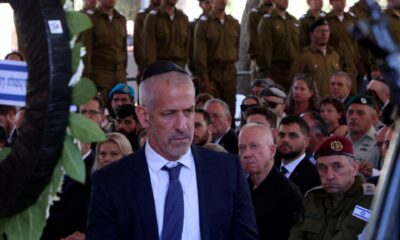
 Middle East1 day ago
Middle East1 day agoIsraeli spy chief accuses Netanyahu of demanding illegal operations | Politics News
-
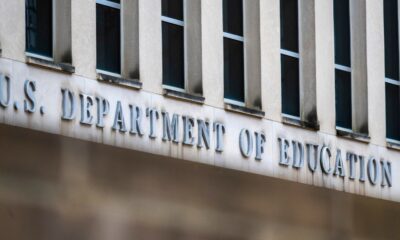
 Education2 days ago
Education2 days agoInvoluntary collection of defaulted student loans to resume, Education Department says
-
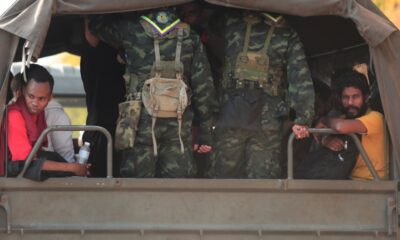
 Middle East2 days ago
Middle East2 days ago‘A cancer’: UN warns Asia-based cybercrime syndicates expanding worldwide | Cybercrime News
-
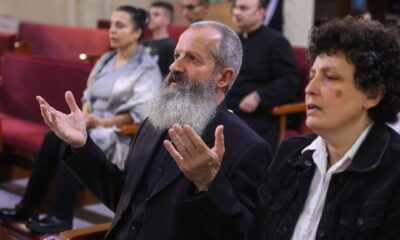
 Conflict Zones1 day ago
Conflict Zones1 day agoGaza’s Christians mourn death of Pope Francis | Israel-Palestine conflict News
-
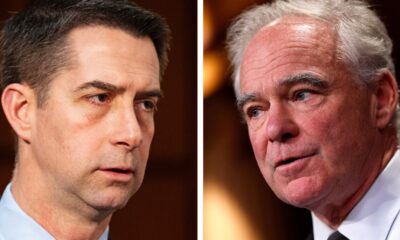
 Education2 days ago
Education2 days agoAs a nationwide push to ban cellphones in schools grows, Congress looks to get involved
-
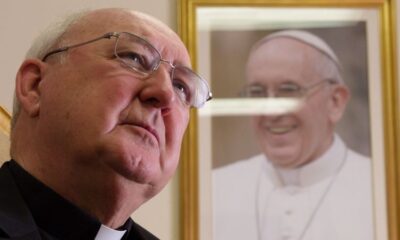
 Europe2 days ago
Europe2 days agoCardinal Kevin Farrell: Meet the ‘camerlengo’ running the Vatican




